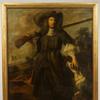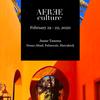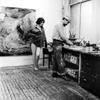
Variations on a Theme: Works by Herbert Barnett
https://www.artsy.net/show/childs-gallery-variations-on-a-theme-works-by-herbert-barnett
BOSTON, MA – Childs Gallery’s latest exhibition, Variations on a Theme: Works by Herbert Barnett, explores the close relationship between mid-century modernist Herbert Barnett’s oil paintings, watercolors, and drawings. On view from August 24 to October 22, the show focuses on a few of Barnett’s most familiar subjects: New England landscapes, the woodlands of central Massachusetts, and several fine examples of the artist’s still lifes. Organized thematically, this small, intimate exhibition provides a unique opportunity to explore the variation of Barnett’s subjects across multiple mediums. Childs Gallery’s show coincides with the exhibition Herbert Barnett: Vermont Life and Landscape, 1940-1948 at the University of Vermont’s Fleming Museum, on view September 26 – December 15, 2017.
Herbert Barnett (1910-1972) was an American artist whose life and work was closely tied to New England. His distinctive style of painting draws upon both the American tradition of representation and the artistic innovations of the Cubists. He is known as a painter of extraordinary ability and a virtuoso draftsman.
Barnett was born in Rhode Island in 1910 and studied at the Rhode Island School of Design while still in high school. He graduated from the Boston Museum of Fine Arts School in 1930 and spent the next three years traveling and studying in Europe. From 1934 to 1940, he taught privately in New York by winter and Cape Ann, MA by summer. In 1940, Barnett became head of the Worcester Art Museum School, a position he held for the next 11 years. During the summers, he painted in Vermont and at one point, taught at the University of Vermont. In addition to Vermont landscapes, Barnett focused on Rockport and central Massachusetts. In 1951, he became the Dean of the Cincinnati Art Academy, where he remained until his death in 1972.
Barnett’s style was influenced by Cubism, as well as the late work of Cezanne, the French Fauves, German Expressionists, and Futurist compositions. Similar to the style of Oscar Fehrer (1872-1958), Barnett's paintings reflect a three-dimensional crystallized structure on the two dimensions of the canvas. For Barnett, “this simultaneous concern with three-dimensional volume and two-dimensional design presents a contrapuntal problem and can result in a satisfying sense of reconciliation between the complexity of nature and the limitations of the picture plane." Barnett’s emphasis on structural problems reflected his admiration for the technical breakthroughs pioneered by Cézanne and realized by Picasso and Braque during the cubist movement.
Barnett's work is represented in many public and private collections including the Smithsonian American Art Museum, Washington, DC; the Worcester Art Museum, MA; the Cincinnati Art Museum, OH; Pennsylvania Academy of Fine Arts, Philadelphia; Art Institute of Chicago; Mead Art Center, Amherst College, MA; University of Arizona Museum of Art, Tucson; Maier Museum, Randolph Macon College, Lynchburg, VA; Art Academy of Cincinnati, OH; New Britain Museum of American Art, CT; and the Robert Hull Fleming Museum, University of Vermont.
About Childs Gallery: Established in 1937 on Newbury Street in Boston’s Back Bay, Childs Gallery holds one of the largest inventories of oil paintings, drawings, watercolors, prints and sculpture in the United States. We actively service collectors, artists, estates and corporate clients throughout the country in the buying and selling of fine art, and have placed exceptional works in major museums nationwide. Our extensive holdings – including prints and drawings that range from Old Masters to 20th century notables to 21st century contemporaries, along with superb paintings and sculpture from the past 200 years – are particularly appealing to the eclectic tastes of today’s art lovers, as it’s the collector’s eye, not the historic period or medium, that makes for a cohesive and personally satisfying collection.
- Contact:
- Stephanie Bond
- stephanie@childsgallery.com
- 6172661108








_Infinity_by_Santiago_Medina_PhotoCr100x100_c.jpg)







